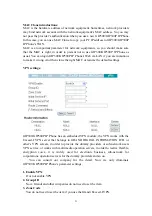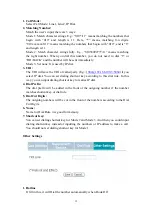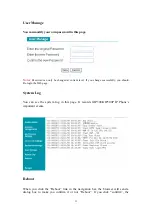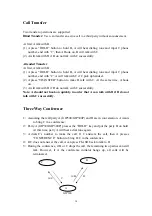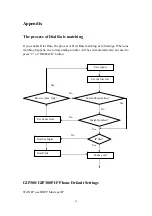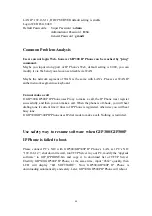
26
1. Outbound Proxy:
You should set it if you use Outbound Proxy to send the SIP messages.
2. Outbound Proxy Port:
Outbound Proxy Port
3. Domain name Mode:
If or not use domain name in the SIP URI.
4. Carry Port Information
If or not carry Port information in the SIP URI.
5. Second Dial Mode:
You can choose Inband, RFC2833 or SIP-INFO. You can use the default setting.
6. RFC2833 Payload(>=96)
You can use the default setting.
7. Register Refresh Interval (Second)
The interval between two normal Register messages. You can use the default
setting.
8. RTP Port
GIP300/GIP300P IP Phone will select idle port for RTP if you set “0”, otherwise
GIP300/GIP300P IP Phone will use the value you set. Generally speaking, set “0”.
9. Signal Port
The local port of SIP protocol.
10. Cancel Message Enable
When you set enable an unregistered message will be sent before registration,
while you set disable, unregistered message will not be sent before registration.
You should set the option for different Proxy
11. Prack Enable
The option for RFC 3262.
12. Keep-alive interval (10-60s)
The interval that we send an empty packet to Proxy.
13. Signal Encryption
If or not enable Signal Encryption. There are 4 kinds of encryption: Normal, RC4,
N2C and ET. They are used by special Proxy. Generally speaking, you do not
need to enable it.
14. RTP/RTCP Encryption
If or not enable RTP/RTCP Encryption. The way to use it is the same to Signal
Encryption.
15. Encryption key
Key for special encryption
16. ET Encrypt Type
ET Encrypt arithmetic type
17. ET Encrypt Depth
ET Encrypt arithmetic depth
Содержание GIP300
Страница 1: ...GIP300 300P User Manual Version 1 0 ...










